 I met Diane in person at a book signing in Topsail Beach at Quarter Moon Books. In my overzealous fangirling,
I met Diane in person at a book signing in Topsail Beach at Quarter Moon Books. In my overzealous fangirling,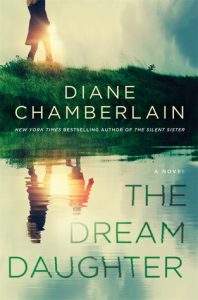 I crashed a book club photo and had to be gently shooed away. I’ve been her most awkward fan since, and she’s been the most gracious literary star. I show up for each new book’s signing / reading like a middle-aged stalker who looks so innocent (muahaha), and Diane keeps smiling and signing my new books. If only she could write super fast; I know I will love each new story. I was fortunate to receive an early copy of The Dream Daughter—my review—coming out October 2.
I crashed a book club photo and had to be gently shooed away. I’ve been her most awkward fan since, and she’s been the most gracious literary star. I show up for each new book’s signing / reading like a middle-aged stalker who looks so innocent (muahaha), and Diane keeps smiling and signing my new books. If only she could write super fast; I know I will love each new story. I was fortunate to receive an early copy of The Dream Daughter—my review—coming out October 2.
Tell me about your writing process—any tricks / nuances to keep you on track, inspirations material or abstract, where you write (Topsail!) and when.
 I usually write either in my Raleigh area sunroom or at my condo on Topsail Island. I generally have a year to write a book. The first few months, I think about my idea and start doing research, often visiting the area where the story takes place. I begin picturing scenes and putting them on post it notes that I move around on a big presentation board until I like the arc of the story, thus creating an outline. At the same time, I think about my characters, specifically what type of person will have the hardest time dealing with whatever dilemma I’ve come up with for the story.
I usually write either in my Raleigh area sunroom or at my condo on Topsail Island. I generally have a year to write a book. The first few months, I think about my idea and start doing research, often visiting the area where the story takes place. I begin picturing scenes and putting them on post it notes that I move around on a big presentation board until I like the arc of the story, thus creating an outline. At the same time, I think about my characters, specifically what type of person will have the hardest time dealing with whatever dilemma I’ve come up with for the story. 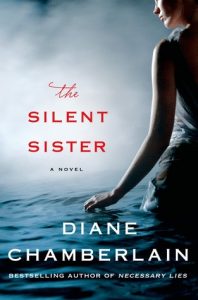 If there is no personal struggle, there is no story. I think about which characters will have a point of view in the story and will they have a first person or third person point of view and will I write the story in present or past tense. I sometimes look on the internet for pictures of people who make me think of my characters. I find this a huge help in creating characters who feel very real to me and hopefully to my readers. These are all decisions I make before I start writing.
If there is no personal struggle, there is no story. I think about which characters will have a point of view in the story and will they have a first person or third person point of view and will I write the story in present or past tense. I sometimes look on the internet for pictures of people who make me think of my characters. I find this a huge help in creating characters who feel very real to me and hopefully to my readers. These are all decisions I make before I start writing.
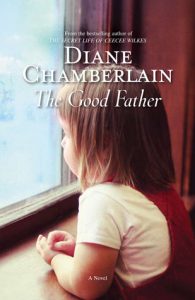 Finally, I start writing about 6 months before my deadline. I usually listen to movie soundtracks as I write because I like the emotional ups and downs of the music. I’m always doing research as I write. Also, I listen to my characters because they frequently go astray from my outline and I’ve learned to pay attention to them. I write three to five drafts. Finally, often a bit late, I turn in the book. That’s where my dynamite editor comes in. She reads the book, looking at the big picture. What works and what doesn’t? She makes many suggestions, sometimes requiring a big change in the book. I’ve learned to listen to her, and I rewrite. And perhaps rewrite yet again.
Finally, I start writing about 6 months before my deadline. I usually listen to movie soundtracks as I write because I like the emotional ups and downs of the music. I’m always doing research as I write. Also, I listen to my characters because they frequently go astray from my outline and I’ve learned to pay attention to them. I write three to five drafts. Finally, often a bit late, I turn in the book. That’s where my dynamite editor comes in. She reads the book, looking at the big picture. What works and what doesn’t? She makes many suggestions, sometimes requiring a big change in the book. I’ve learned to listen to her, and I rewrite. And perhaps rewrite yet again.
Lead me through your publishing process, as in who does what when, and your marketing responsibilities (book tours! What else?).
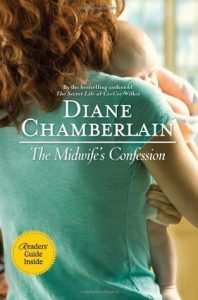 Here’s how it works. First I write a book. Then I have an agent who is responsible for finding the publisher she thinks will do the best job with that book. She is also responsible for negotiating the contract with that publisher. You can see in my answer above some of the work the editor does with regard to my book. The publisher then, of course, publishes the book. If the publisher feels strongly that they can make the book a bestseller, they will give it a lot of advertising and other support before and during publication. My publisher for the last six books, St. Martins Press, does a great deal of promotion for me. I try to hold up my end by keeping up with social media (which I enjoy), giving interviews, touring to speak to groups and do book signings, where I get to meet my readers, the best part of the process!
Here’s how it works. First I write a book. Then I have an agent who is responsible for finding the publisher she thinks will do the best job with that book. She is also responsible for negotiating the contract with that publisher. You can see in my answer above some of the work the editor does with regard to my book. The publisher then, of course, publishes the book. If the publisher feels strongly that they can make the book a bestseller, they will give it a lot of advertising and other support before and during publication. My publisher for the last six books, St. Martins Press, does a great deal of promotion for me. I try to hold up my end by keeping up with social media (which I enjoy), giving interviews, touring to speak to groups and do book signings, where I get to meet my readers, the best part of the process!
Before the Storm series
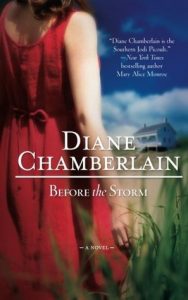
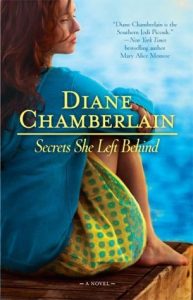
Describe your support system: groups online and IRL (MKA, another favorite author of mine)—your biggest cheerleaders…
 My biggest supporter is my significant other, John. He’s a photographer and understands the creative process and doesn’t complain that once a year, as deadline nears, I disappear from real life into my imagination, 24/7. Aside from him, I have many local writer friends who I get together with often. And then I have my “official group.” We call ourselves The Weymouth Seven because we originally met up at the Weymouth mansion in Southern Pines, NC, where authors are invited to work for up to two weeks each year. Now we usually meet up on Topsail Island. You’re right that Mary Kay Andrews is a big part of our group. She’s our ringleader, the one who keeps us on track during the week that we meet. Other members are mystery writer Margaret Maron, historical mystery writer, Sarah Shaber, horror and thriller writer Alexandra Sokoloff, and mystery writers, Brenda Witchger and Katy Munger. We have fun but we work hard at the same time.
My biggest supporter is my significant other, John. He’s a photographer and understands the creative process and doesn’t complain that once a year, as deadline nears, I disappear from real life into my imagination, 24/7. Aside from him, I have many local writer friends who I get together with often. And then I have my “official group.” We call ourselves The Weymouth Seven because we originally met up at the Weymouth mansion in Southern Pines, NC, where authors are invited to work for up to two weeks each year. Now we usually meet up on Topsail Island. You’re right that Mary Kay Andrews is a big part of our group. She’s our ringleader, the one who keeps us on track during the week that we meet. Other members are mystery writer Margaret Maron, historical mystery writer, Sarah Shaber, horror and thriller writer Alexandra Sokoloff, and mystery writers, Brenda Witchger and Katy Munger. We have fun but we work hard at the same time.
Keeper of the Light series



You’ve always had touches of history in your novels. Recently, you’ve opened up to historical fiction, and now sci-fi / fantasy with your latest book about time travel. How did this come about; in what ways do your life and work influence each other, and how did your previous profession prepare you for fiction writing? Also talk about secrets, their importance to you and your work, and what kind of secrets you like best to weave into your stories.
 When I heard about the eugenics (forced sterilization) program in North Carolina, I knew I had to write about it. That meant setting the story during the years of the program, so I selected 1960 and thus wrote my first novel (Necessary Lies) with a totally historical setting and I found I really enjoyed it. Two books later, I decided I wanted to write about the 1944 polio outbreak in Hickory, NC during which the town built a functioning polio hospital in 54 hours (The Stolen Marriage). So I would say, if the idea that comes to me is historical, I will happily write it, but I am still perfectly happy writing contemporary books as well.
When I heard about the eugenics (forced sterilization) program in North Carolina, I knew I had to write about it. That meant setting the story during the years of the program, so I selected 1960 and thus wrote my first novel (Necessary Lies) with a totally historical setting and I found I really enjoyed it. Two books later, I decided I wanted to write about the 1944 polio outbreak in Hickory, NC during which the town built a functioning polio hospital in 54 hours (The Stolen Marriage). So I would say, if the idea that comes to me is historical, I will happily write it, but I am still perfectly happy writing contemporary books as well.
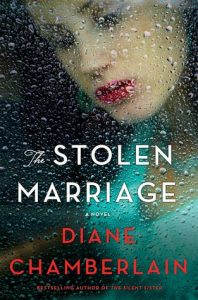 When it comes to The Dream Daughter, that is a whole different subject! For years, I had the idea that’s central in The Dream Daughter: a woman is told that her unborn baby will die, but she learns that if she’s willing to take a huge risk and travel to the future, her baby could very well live. I put this idea off for years because it is so unlike my other books, but finally, I talked to my editor and she gave me the go-ahead. The book was tremendous fun to write and the early reviews have been amazing. I’m grateful to readers who dislike time travel for giving this book a try because it’s still “vintage Diane Chamberlain” and people seem to be loving it.
When it comes to The Dream Daughter, that is a whole different subject! For years, I had the idea that’s central in The Dream Daughter: a woman is told that her unborn baby will die, but she learns that if she’s willing to take a huge risk and travel to the future, her baby could very well live. I put this idea off for years because it is so unlike my other books, but finally, I talked to my editor and she gave me the go-ahead. The book was tremendous fun to write and the early reviews have been amazing. I’m grateful to readers who dislike time travel for giving this book a try because it’s still “vintage Diane Chamberlain” and people seem to be loving it.
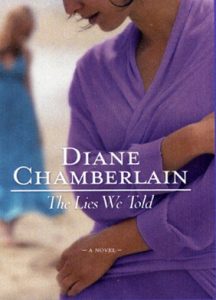 I think your question about my previous profession (clinical social work) and secrets actually go together. I worked in hospitals and then in a private psychotherapy practice with adolescents and their families, and one thing I learned is how destructive secrets can be in a family. I was fascinated by that topic, so it often appears in my stories.
I think your question about my previous profession (clinical social work) and secrets actually go together. I worked in hospitals and then in a private psychotherapy practice with adolescents and their families, and one thing I learned is how destructive secrets can be in a family. I was fascinated by that topic, so it often appears in my stories.
What do you love most about your creativity?
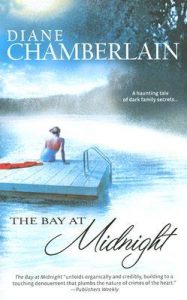 I’m very grateful for my imagination. It got me into tons of trouble as a kid, but now pays off. I might be stopped at a traffic light and see a woman pushing a baby carriage across the street and within 30 seconds, I imagine a car hitting them, and the police discover it was on purpose and there was a connection between the woman and the driver, or maybe even between the baby and the driver . . . it’s exhausting having a brain like this, but it often pays off in the end if it means I can entertain my readers.
I’m very grateful for my imagination. It got me into tons of trouble as a kid, but now pays off. I might be stopped at a traffic light and see a woman pushing a baby carriage across the street and within 30 seconds, I imagine a car hitting them, and the police discover it was on purpose and there was a connection between the woman and the driver, or maybe even between the baby and the driver . . . it’s exhausting having a brain like this, but it often pays off in the end if it means I can entertain my readers.
Connect with Diane:
 Website
Website
Amazon
Goodreads
Twitter
Facebook
Book series in order of publication
Wikipedia
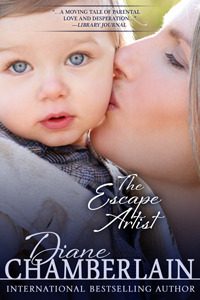
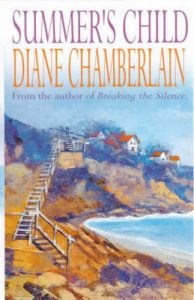
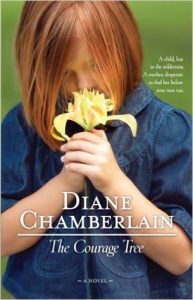

 “Have you ever been in a lockdown?”
“Have you ever been in a lockdown?” I met Diane in person at a book signing in Topsail Beach at Quarter Moon Books. In my overzealous fangirling,
I met Diane in person at a book signing in Topsail Beach at Quarter Moon Books. In my overzealous fangirling, I crashed a book club photo and had to be gently shooed away. I’ve been her most awkward fan since, and she’s been the most gracious literary star. I show up for each new book’s signing / reading like a middle-aged stalker who looks so innocent (muahaha), and Diane keeps smiling and signing my new books. If only she could write super fast; I know I will love each new story. I was fortunate to receive an early copy of The Dream Daughter—
I crashed a book club photo and had to be gently shooed away. I’ve been her most awkward fan since, and she’s been the most gracious literary star. I show up for each new book’s signing / reading like a middle-aged stalker who looks so innocent (muahaha), and Diane keeps smiling and signing my new books. If only she could write super fast; I know I will love each new story. I was fortunate to receive an early copy of The Dream Daughter— I usually write either in my Raleigh area sunroom or at my condo on Topsail Island. I generally have a year to write a book. The first few months, I think about my idea and start doing research, often visiting the area where the story takes place. I begin picturing scenes and putting them on post it notes that I move around on a big presentation board until I like the arc of the story, thus creating an outline. At the same time, I think about my characters, specifically what type of person will have the hardest time dealing with whatever dilemma I’ve come up with for the story.
I usually write either in my Raleigh area sunroom or at my condo on Topsail Island. I generally have a year to write a book. The first few months, I think about my idea and start doing research, often visiting the area where the story takes place. I begin picturing scenes and putting them on post it notes that I move around on a big presentation board until I like the arc of the story, thus creating an outline. At the same time, I think about my characters, specifically what type of person will have the hardest time dealing with whatever dilemma I’ve come up with for the story.  If there is no personal struggle, there is no story. I think about which characters will have a point of view in the story and will they have a first person or third person point of view and will I write the story in present or past tense. I sometimes look on the internet for pictures of people who make me think of my characters. I find this a huge help in creating characters who feel very real to me and hopefully to my readers. These are all decisions I make before I start writing.
If there is no personal struggle, there is no story. I think about which characters will have a point of view in the story and will they have a first person or third person point of view and will I write the story in present or past tense. I sometimes look on the internet for pictures of people who make me think of my characters. I find this a huge help in creating characters who feel very real to me and hopefully to my readers. These are all decisions I make before I start writing. Finally, I start writing about 6 months before my deadline. I usually listen to movie soundtracks as I write because I like the emotional ups and downs of the music. I’m always doing research as I write. Also, I listen to my characters because they frequently go astray from my outline and I’ve learned to pay attention to them. I write three to five drafts. Finally, often a bit late, I turn in the book. That’s where my dynamite editor comes in. She reads the book, looking at the big picture. What works and what doesn’t? She makes many suggestions, sometimes requiring a big change in the book. I’ve learned to listen to her, and I rewrite. And perhaps rewrite yet again.
Finally, I start writing about 6 months before my deadline. I usually listen to movie soundtracks as I write because I like the emotional ups and downs of the music. I’m always doing research as I write. Also, I listen to my characters because they frequently go astray from my outline and I’ve learned to pay attention to them. I write three to five drafts. Finally, often a bit late, I turn in the book. That’s where my dynamite editor comes in. She reads the book, looking at the big picture. What works and what doesn’t? She makes many suggestions, sometimes requiring a big change in the book. I’ve learned to listen to her, and I rewrite. And perhaps rewrite yet again. Here’s how it works. First I write a book. Then I have an agent who is responsible for finding the publisher she thinks will do the best job with that book. She is also responsible for negotiating the contract with that publisher. You can see in my answer above some of the work the editor does with regard to my book. The publisher then, of course, publishes the book. If the publisher feels strongly that they can make the book a bestseller, they will give it a lot of advertising and other support before and during publication. My publisher for the last six books, St. Martins Press, does a great deal of promotion for me. I try to hold up my end by keeping up with social media (which I enjoy), giving interviews, touring to speak to groups and do book signings, where I get to meet my readers, the best part of the process!
Here’s how it works. First I write a book. Then I have an agent who is responsible for finding the publisher she thinks will do the best job with that book. She is also responsible for negotiating the contract with that publisher. You can see in my answer above some of the work the editor does with regard to my book. The publisher then, of course, publishes the book. If the publisher feels strongly that they can make the book a bestseller, they will give it a lot of advertising and other support before and during publication. My publisher for the last six books, St. Martins Press, does a great deal of promotion for me. I try to hold up my end by keeping up with social media (which I enjoy), giving interviews, touring to speak to groups and do book signings, where I get to meet my readers, the best part of the process!

 My biggest supporter is my significant other, John. He’s a photographer and understands the creative process and doesn’t complain that once a year, as deadline nears, I disappear from real life into my imagination, 24/7. Aside from him, I have many local writer friends who I get together with often. And then I have my “official group.” We call ourselves The Weymouth Seven because we originally met up at the Weymouth mansion in Southern Pines, NC, where authors are invited to work for up to two weeks each year. Now we usually meet up on Topsail Island. You’re right that Mary Kay Andrews is a big part of our group. She’s our ringleader, the one who keeps us on track during the week that we meet. Other members are mystery writer Margaret Maron, historical mystery writer, Sarah Shaber, horror and thriller writer Alexandra Sokoloff, and mystery writers, Brenda Witchger and Katy Munger. We have fun but we work hard at the same time.
My biggest supporter is my significant other, John. He’s a photographer and understands the creative process and doesn’t complain that once a year, as deadline nears, I disappear from real life into my imagination, 24/7. Aside from him, I have many local writer friends who I get together with often. And then I have my “official group.” We call ourselves The Weymouth Seven because we originally met up at the Weymouth mansion in Southern Pines, NC, where authors are invited to work for up to two weeks each year. Now we usually meet up on Topsail Island. You’re right that Mary Kay Andrews is a big part of our group. She’s our ringleader, the one who keeps us on track during the week that we meet. Other members are mystery writer Margaret Maron, historical mystery writer, Sarah Shaber, horror and thriller writer Alexandra Sokoloff, and mystery writers, Brenda Witchger and Katy Munger. We have fun but we work hard at the same time.


 When I heard about the eugenics (forced sterilization) program in North Carolina, I knew I had to write about it. That meant setting the story during the years of the program, so I selected 1960 and thus wrote my first novel (Necessary Lies) with a totally historical setting and I found I really enjoyed it. Two books later, I decided I wanted to write about the 1944 polio outbreak in Hickory, NC during which the town built a functioning polio hospital in 54 hours (The Stolen Marriage). So I would say, if the idea that comes to me is historical, I will happily write it, but I am still perfectly happy writing contemporary books as well.
When I heard about the eugenics (forced sterilization) program in North Carolina, I knew I had to write about it. That meant setting the story during the years of the program, so I selected 1960 and thus wrote my first novel (Necessary Lies) with a totally historical setting and I found I really enjoyed it. Two books later, I decided I wanted to write about the 1944 polio outbreak in Hickory, NC during which the town built a functioning polio hospital in 54 hours (The Stolen Marriage). So I would say, if the idea that comes to me is historical, I will happily write it, but I am still perfectly happy writing contemporary books as well. When it comes to The Dream Daughter, that is a whole different subject! For years, I had the idea that’s central in The Dream Daughter: a woman is told that her unborn baby will die, but she learns that if she’s willing to take a huge risk and travel to the future, her baby could very well live. I put this idea off for years because it is so unlike my other books, but finally, I talked to my editor and she gave me the go-ahead. The book was tremendous fun to write and the early reviews have been amazing. I’m grateful to readers who dislike time travel for giving this book a try because it’s still “vintage Diane Chamberlain” and people seem to be loving it.
When it comes to The Dream Daughter, that is a whole different subject! For years, I had the idea that’s central in The Dream Daughter: a woman is told that her unborn baby will die, but she learns that if she’s willing to take a huge risk and travel to the future, her baby could very well live. I put this idea off for years because it is so unlike my other books, but finally, I talked to my editor and she gave me the go-ahead. The book was tremendous fun to write and the early reviews have been amazing. I’m grateful to readers who dislike time travel for giving this book a try because it’s still “vintage Diane Chamberlain” and people seem to be loving it. I think your question about my previous profession (clinical social work) and secrets actually go together. I worked in hospitals and then in a private psychotherapy practice with adolescents and their families, and one thing I learned is how destructive secrets can be in a family. I was fascinated by that topic, so it often appears in my stories.
I think your question about my previous profession (clinical social work) and secrets actually go together. I worked in hospitals and then in a private psychotherapy practice with adolescents and their families, and one thing I learned is how destructive secrets can be in a family. I was fascinated by that topic, so it often appears in my stories. I’m very grateful for my imagination. It got me into tons of trouble as a kid, but now pays off. I might be stopped at a traffic light and see a woman pushing a baby carriage across the street and within 30 seconds, I imagine a car hitting them, and the police discover it was on purpose and there was a connection between the woman and the driver, or maybe even between the baby and the driver . . . it’s exhausting having a brain like this, but it often pays off in the end if it means I can entertain my readers.
I’m very grateful for my imagination. It got me into tons of trouble as a kid, but now pays off. I might be stopped at a traffic light and see a woman pushing a baby carriage across the street and within 30 seconds, I imagine a car hitting them, and the police discover it was on purpose and there was a connection between the woman and the driver, or maybe even between the baby and the driver . . . it’s exhausting having a brain like this, but it often pays off in the end if it means I can entertain my readers. Website
Website



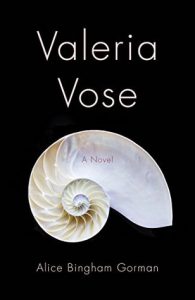 As Mallie’s marriage crumbles, she searches for her identity through religion. She falls in love with an unscrupulous priest counseling her, but bounces back and continues her journey of self-discovery. Her friend Jenny introduces her to spiritual retreats and workshops. The story nearly becomes a Christian self-help book multiple times, as it spends much time expounding upon the wisdom of the retreats and workshops. Nevertheless, it’s an excellent portrayal of a woman set loose from what she considered a solid foundation as a wife and mother in the late 70s. Having come unmoored, she must find a way to anchor herself without a partner to lean on and no job skills. The ending is credible, hopeful, and maybe a bit feminist. Gorman does a great job of showing Mallie’s emotions ricocheting around in her head, and how hard she tries to connect with the world around her. Though a bit insular, based on the Christian themes, this book tells a story of women who buy into the Mrs. degree, and how one breaks free after a crash and burn, definitely a worthwhile read. I was fortunate to receive this e-book from She Writes Press through NetGalley.
As Mallie’s marriage crumbles, she searches for her identity through religion. She falls in love with an unscrupulous priest counseling her, but bounces back and continues her journey of self-discovery. Her friend Jenny introduces her to spiritual retreats and workshops. The story nearly becomes a Christian self-help book multiple times, as it spends much time expounding upon the wisdom of the retreats and workshops. Nevertheless, it’s an excellent portrayal of a woman set loose from what she considered a solid foundation as a wife and mother in the late 70s. Having come unmoored, she must find a way to anchor herself without a partner to lean on and no job skills. The ending is credible, hopeful, and maybe a bit feminist. Gorman does a great job of showing Mallie’s emotions ricocheting around in her head, and how hard she tries to connect with the world around her. Though a bit insular, based on the Christian themes, this book tells a story of women who buy into the Mrs. degree, and how one breaks free after a crash and burn, definitely a worthwhile read. I was fortunate to receive this e-book from She Writes Press through NetGalley. Jake pulled on the line reeling out. “I got one!”
Jake pulled on the line reeling out. “I got one!”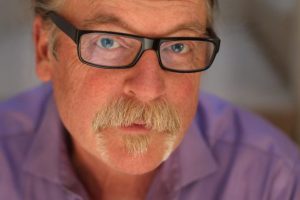 I met Bill on Facebook. He’s unique, pragmatic, wryly funny, and shares lots of mushroom pics amongst his politics. Oh yeah, he’s also a pretty talented writer. He’s always surprising me, in his books, online, and here in his interview. Read about his process and creativity; then read his books. You’re welcome.
I met Bill on Facebook. He’s unique, pragmatic, wryly funny, and shares lots of mushroom pics amongst his politics. Oh yeah, he’s also a pretty talented writer. He’s always surprising me, in his books, online, and here in his interview. Read about his process and creativity; then read his books. You’re welcome.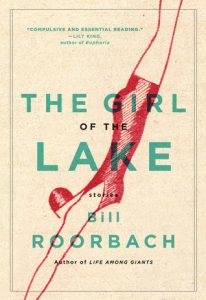
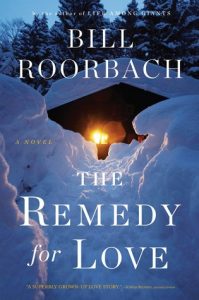 sometimes five or six a day, at any time, like waiting for my daughter at ballet class, just out in the car with the laptop tapping away. I do have a studio and when things get serious I sit out there with the skunks. I do a lot of daydreaming and side reading and more and more social media, unfortunately, or fortunately, I’m not sure which. Politics has clouded my brain, as well, but we can’t sit idly by. I had to look up pantser. I am not a pantser, but draft multiply and give myself all the time in the world.
sometimes five or six a day, at any time, like waiting for my daughter at ballet class, just out in the car with the laptop tapping away. I do have a studio and when things get serious I sit out there with the skunks. I do a lot of daydreaming and side reading and more and more social media, unfortunately, or fortunately, I’m not sure which. Politics has clouded my brain, as well, but we can’t sit idly by. I had to look up pantser. I am not a pantser, but draft multiply and give myself all the time in the world.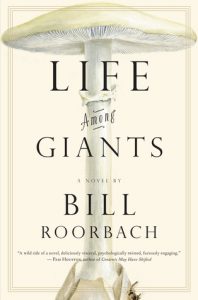
 send the pages back in and return to the new project. Usually at that point the old project is accepted. Next come copyedits, possibly a legal reading, then first-pass galleys, second-pass galleys, all while a cover is being designed at the publisher’s, and jacket copy being written, a publicity campaign designed, book tour scheduled, all that stuff, which I have little to do with except approval or disapproval. The book comes out, the tour starts, I go on TV and radio, all the while finding those little blocks of time to work on the new project.
send the pages back in and return to the new project. Usually at that point the old project is accepted. Next come copyedits, possibly a legal reading, then first-pass galleys, second-pass galleys, all while a cover is being designed at the publisher’s, and jacket copy being written, a publicity campaign designed, book tour scheduled, all that stuff, which I have little to do with except approval or disapproval. The book comes out, the tour starts, I go on TV and radio, all the while finding those little blocks of time to work on the new project.
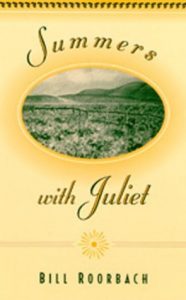 I too have an interesting background of employment (including llama care) giving me insight for specific storylines. How has your background prepared you for your writing career, and how does your life influence your art and vice versa?
I too have an interesting background of employment (including llama care) giving me insight for specific storylines. How has your background prepared you for your writing career, and how does your life influence your art and vice versa? What do you love most about your creativity?
What do you love most about your creativity?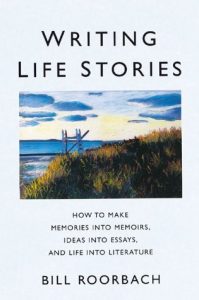
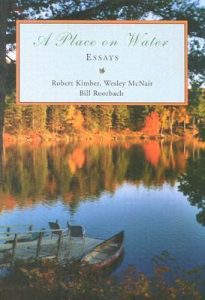
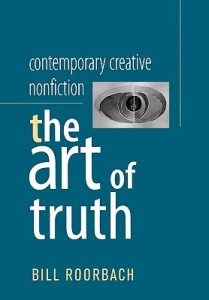
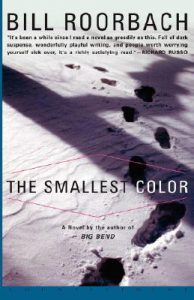
 Gilly has “visions” that she can’t control and often only frustrate her with their lack of useful details. Jake pushes her to help him find his daughter Zoe who’s been kidnapped, because he doesn’t understand how Gilly’s visions work. Both of their pasts come creeping in to haunt them, endangering Gilly as well. Sissell writes compelling characters with complex backgrounds, which are shared with beautiful and timely exposition, exploring how far-reaching the consequences of poor judgment and denial. The ending’s revelation is astonishing, and heartening, in its humanity. Fans of Diane Chamberlain and Kristin Hannah will appreciate Sissel’s work. It’s a definite must-read!
Gilly has “visions” that she can’t control and often only frustrate her with their lack of useful details. Jake pushes her to help him find his daughter Zoe who’s been kidnapped, because he doesn’t understand how Gilly’s visions work. Both of their pasts come creeping in to haunt them, endangering Gilly as well. Sissell writes compelling characters with complex backgrounds, which are shared with beautiful and timely exposition, exploring how far-reaching the consequences of poor judgment and denial. The ending’s revelation is astonishing, and heartening, in its humanity. Fans of Diane Chamberlain and Kristin Hannah will appreciate Sissel’s work. It’s a definite must-read!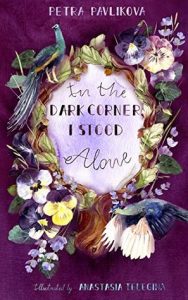 These stories of young women—a step-daughter with an evil step-brother, a disillusioned intellectual, a literary feminist teen, a misplaced mother, and even a queen—trying to retain their spiritual essence in a patriarchal world are gorgeously written and illustrated. They read as fairytales, with villains and heroines, a defined delineation of good vs. evil, fantastic realms, a bit of magic, and even actual fairies. Fans of the Brothers Grimm, and especially readers of Angela Slatter, will appreciate the unique flavor of Pavlikova. I was fortunate to win this beautiful ebook through a Goodreads giveaway.
These stories of young women—a step-daughter with an evil step-brother, a disillusioned intellectual, a literary feminist teen, a misplaced mother, and even a queen—trying to retain their spiritual essence in a patriarchal world are gorgeously written and illustrated. They read as fairytales, with villains and heroines, a defined delineation of good vs. evil, fantastic realms, a bit of magic, and even actual fairies. Fans of the Brothers Grimm, and especially readers of Angela Slatter, will appreciate the unique flavor of Pavlikova. I was fortunate to win this beautiful ebook through a Goodreads giveaway.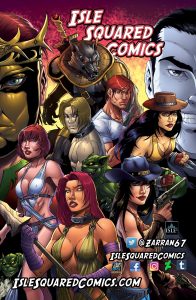
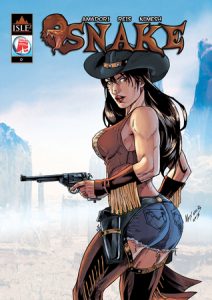

 It’s been a real rewarding collaboration and we’re always on the same page creatively, which helps our separate ideas blend and mesh together seamlessly. My other major collaboration was the Western Trilogy (Snake, Bang Bang Lucita and Xibalba) with colorist Nimesh Morarji. Again, another great collaboration that if it we had the funds to continue, would have seen the release of 15 + issues between the three titles and a crossover title called Viperous Vixens (which have all already been scripted).
It’s been a real rewarding collaboration and we’re always on the same page creatively, which helps our separate ideas blend and mesh together seamlessly. My other major collaboration was the Western Trilogy (Snake, Bang Bang Lucita and Xibalba) with colorist Nimesh Morarji. Again, another great collaboration that if it we had the funds to continue, would have seen the release of 15 + issues between the three titles and a crossover title called Viperous Vixens (which have all already been scripted).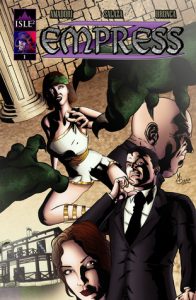
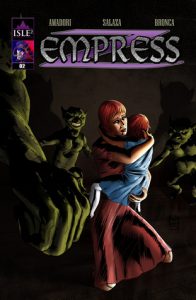


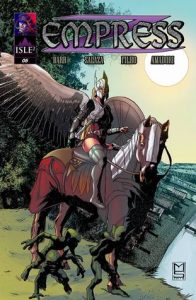

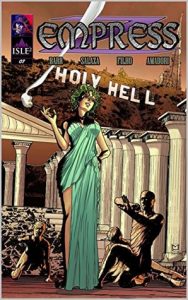

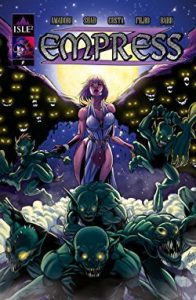


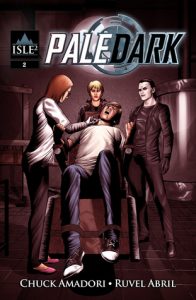
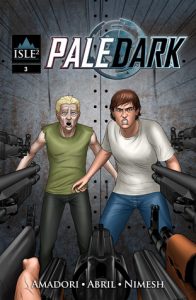
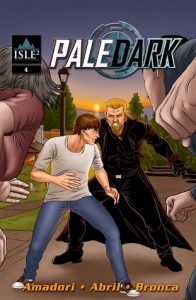

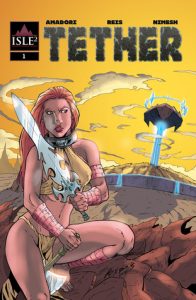

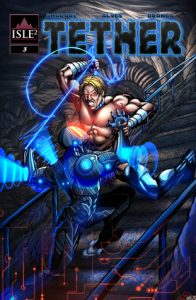
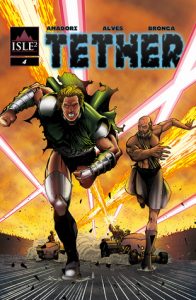
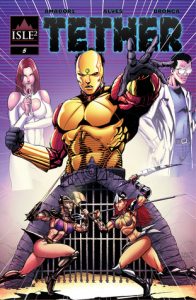
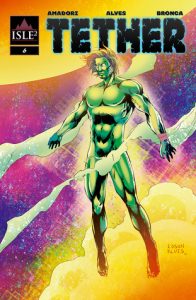
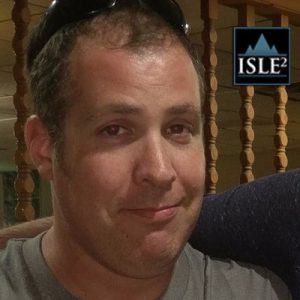
 Life hasn’t gone as planned for Kim and Matthew—Matty—Savage, and their marriage comes to a screeching halt in their cabin in the woods, a world away from Kim’s vamp movie career and Matty’s screenwriting failures in LA. Matty shoving Kim into a glass cabinet with their daughter Rebecca—Bex—a witness demarcates the before and after. A decade later, Kim calls her ex-husband and estranged daughter to the cabin, where they are attacked by supernatural creatures they must fight metaphysically to survive.
Life hasn’t gone as planned for Kim and Matthew—Matty—Savage, and their marriage comes to a screeching halt in their cabin in the woods, a world away from Kim’s vamp movie career and Matty’s screenwriting failures in LA. Matty shoving Kim into a glass cabinet with their daughter Rebecca—Bex—a witness demarcates the before and after. A decade later, Kim calls her ex-husband and estranged daughter to the cabin, where they are attacked by supernatural creatures they must fight metaphysically to survive. Rae’s a screwup—according to Rae. To her family and friends, she spreads herself too thin and holds unrealistic expectations for herself. When you don’t even fit into your own family, it’s hard to feel at home anywhere. Plus, peopling is hard; animals are easier. Then a woman jerks her bike in front of Rae’s car—the thump and bump of driving over a human drives Rae to feel responsible for her, though eyewitnesses say she couldn’t have avoided hitting her. The mysteriously damaged woman and a houseful of pre-weaned kittens overwhelms Rae. The romantic interest introduces her to his new-agey gran, who explains Rae to herself, guiding her onto a healthier path. This is a wonderful story of the complexities of life, the importance of connecting with others, and how everyone must find their own way, not to mention that communication is key. King’s writing draws you in and wraps you in a big, fluffy blanket of ambiguities, yet dear reader leaves her work somehow better equipped to traverse these gray areas. King’s talent makes the words disappear as the story flows through the reader, while letting us know that often others see us more clearly than we can see ourselves. Highly recommended!
Rae’s a screwup—according to Rae. To her family and friends, she spreads herself too thin and holds unrealistic expectations for herself. When you don’t even fit into your own family, it’s hard to feel at home anywhere. Plus, peopling is hard; animals are easier. Then a woman jerks her bike in front of Rae’s car—the thump and bump of driving over a human drives Rae to feel responsible for her, though eyewitnesses say she couldn’t have avoided hitting her. The mysteriously damaged woman and a houseful of pre-weaned kittens overwhelms Rae. The romantic interest introduces her to his new-agey gran, who explains Rae to herself, guiding her onto a healthier path. This is a wonderful story of the complexities of life, the importance of connecting with others, and how everyone must find their own way, not to mention that communication is key. King’s writing draws you in and wraps you in a big, fluffy blanket of ambiguities, yet dear reader leaves her work somehow better equipped to traverse these gray areas. King’s talent makes the words disappear as the story flows through the reader, while letting us know that often others see us more clearly than we can see ourselves. Highly recommended!